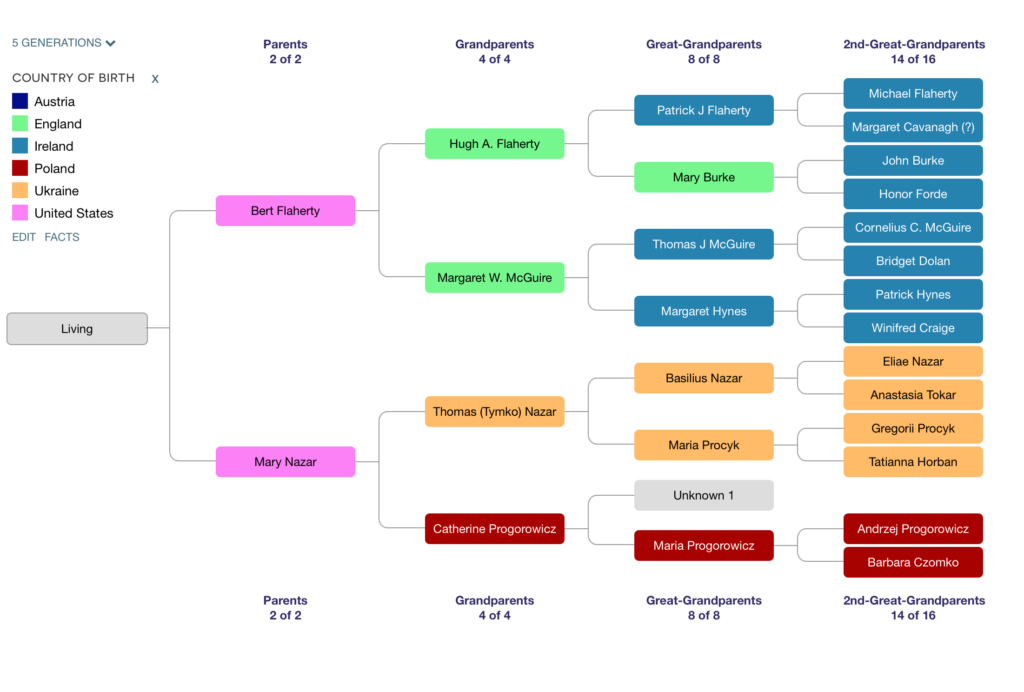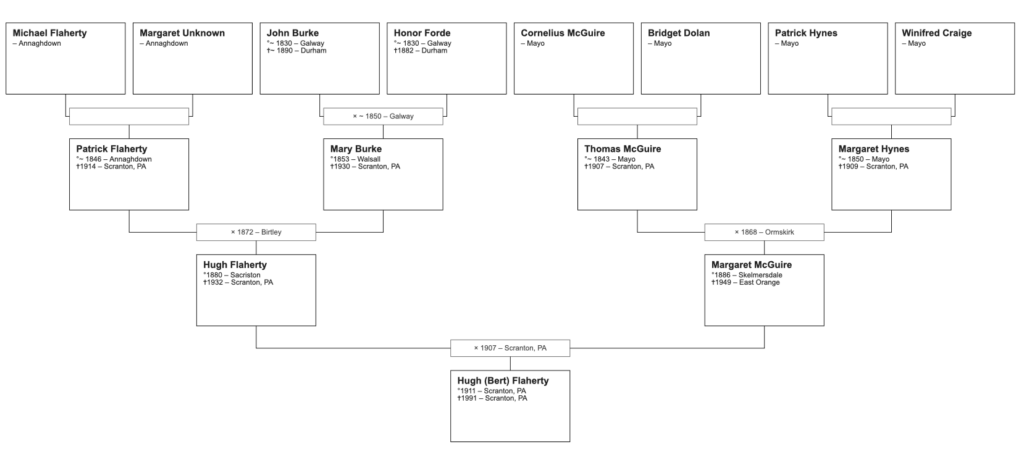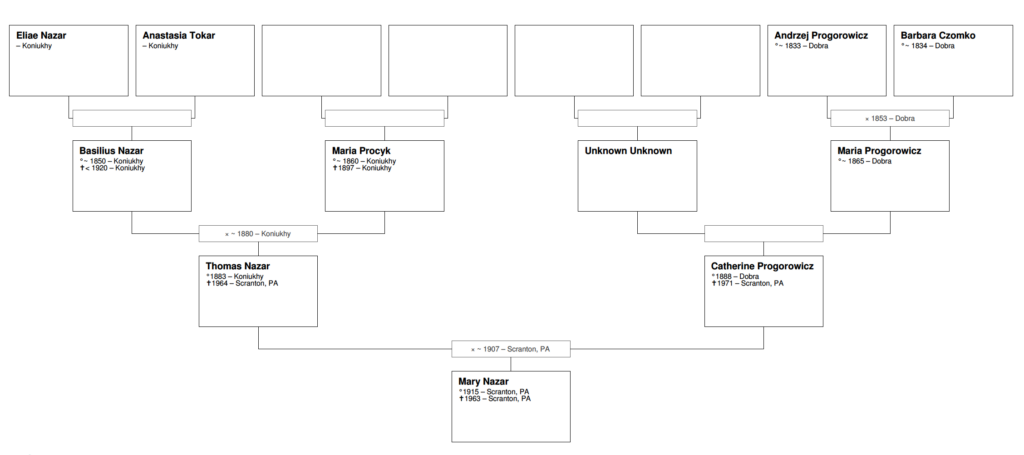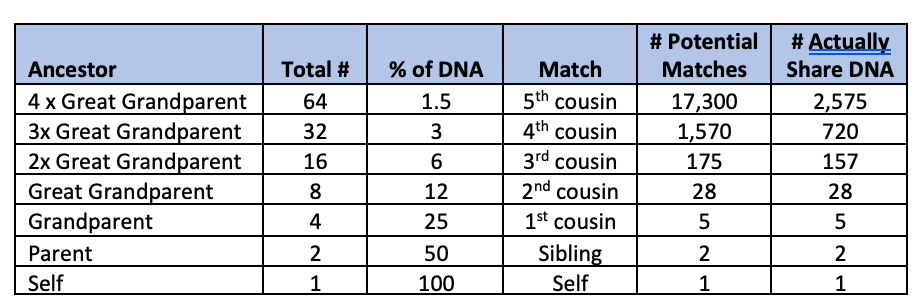The overall FamilyTree is quite large when considering siblings and other family members. Below is a simple tree showing the names of Bert and Mary’s ancestors and which countries they came from.

The following figures provide additional details of Bert’s and Mary’s direct ancestors including their birth, death, and marriage years and locations (if known).


A significantly more detailed Nazar and Flaherty Family Tree can also be found by clicking on the buttons below. These 3D trees are read-only as provided by ClanView, but you can click on each person for additional details and search for specific names. Note that the trees are quite large and should be opened on a computer with sufficient memory.
Use of DNA Analysis
I am very appreciative of those who have done DNA analysis as without this information, it would be impossible to generate the family history. “Autosomal” DNA as typically used at genealogical sites like Ancestry.com are only reliable up to the 3rd or 4th great grandparent level. To help explain this, refer to Figure 4 below.

As can be seen, you (i.e., “Self”) obtain 50% of your DNA from each of your parents. This DNA is given to you at random such that while you and your siblings get 50% of your DNA from your mother and 50% from your father, you each get different sections of DNA from your parents. In addition, since the DNA is given to you at random, your parents may not necessarily give you exactly 50% of each of their parents (e.g., you may end up with 45% of your father’s father and 55% of his mother’s DNA). This same randomness occurs for previous generations which decreases the likelihood that you and different cousins will share DNA the further back you go.
As an example, as shown in Figure 4, a 4th cousin is a person who shares a 3x great grandparent with you (i.e., you both share a great-great-great grandparent). Since you have 32 of these 3x great parents, the most DNA that this ancestor can generally give you is 3% of your total (i.e., 32 grandparents * 3% = 100% of your DNA). However, the further back you go, the likelihood decreases that you will actually share DNA such that of the potential 1,570 4th cousins that you may have, less than half (720) will actually share DNA with you. Then at least one of these 720 4th cousins will have to do a DNA test in order to show this connection.
Unfortunately, DNA testing in Ukraine and Poland is very limited so most DNA connections for the Mary Nazar side of the family are from relatives who came to America, of which there were several. However, a high level DNA match from the birthplace of Thomas Nazar (Koniukhy, Ukraine) has been found further confirming this location.
With respect to Ireland, while many people in Ireland have done DNA testing, Irish research is very challenging. For example, my 2x great grandparents were typically born in Ireland in the mid-1800s but there are no civil Irish records prior to 1864. Consequently, DNA can show a family connection at the 2nd-4th great grandparent level where no records exist to actually confirm this connection. As such, you must rely on family lore, newspaper articles, census records showing families living next door, etc. in order to create the family tree. In those instances where you cannot find the necessary documentation, it is referred to as “brick wall” in the genealogy world. This generally occurs beginning at the 3rd great grandparent level for all Irish ancestors.